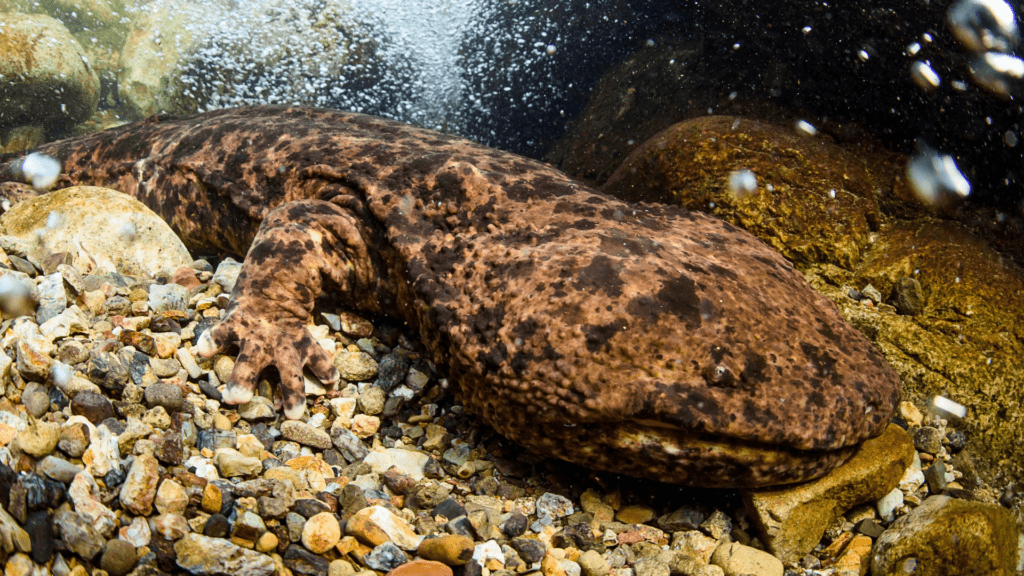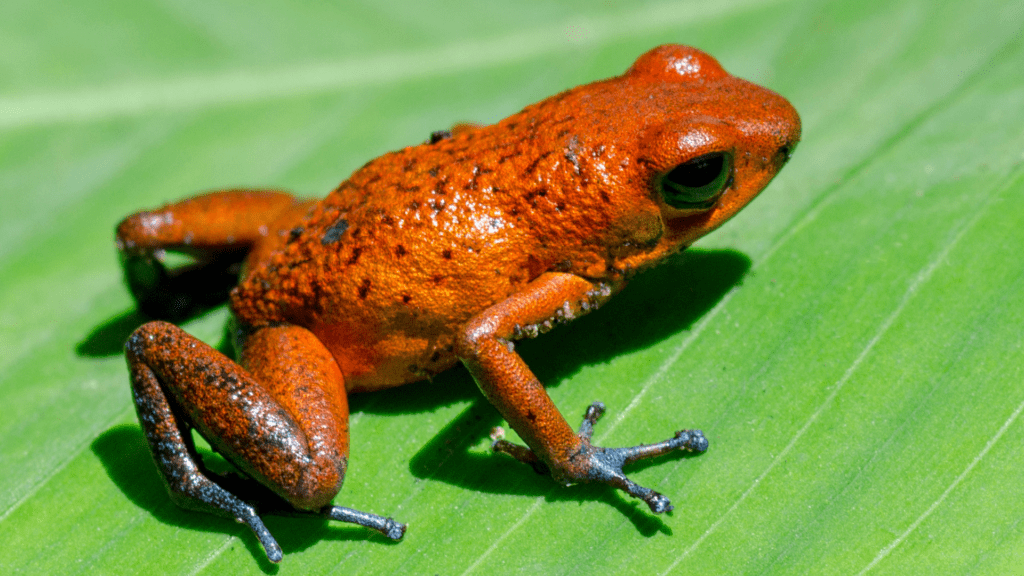Fowler’s Toad (Anaxyrus fowleri) is a small, nocturnal amphibian found across parts of the United States and Canada. First described in 1882, this species is widely distributed in human-inhabited areas, often coexisting with urban environments. Although closely related to the well-known American toad, it is significantly smaller and exhibits various unique characteristics.
Fowler’s Toad: Scientific Classification
| Kingdom: | Animalia |
| Phylum: | Chordata |
| Class: | Amphibia |
| Order: | Anura |
| Family: | Bufonidae |
| Genus: | Anaxyrus |
| Species: | A. fowleri |
| Scientific Name: | Anaxyrus fowleri |
Fowler’s toad: Physical Description
Size
The adult Fowler’s toad typically measures between 5 and 9.5 cm (2.0 to 3.7 inches) in length, with the male generally being smaller than the female. This size range allows them to be agile and efficient insect hunters. Their compact bodies aid in camouflage among leaf litter and undergrowth, helping them evade predators. Seasonal variations can slightly impact their size due to differences in food availability and environmental conditions. Additionally, juvenile toads are noticeably smaller, gradually reaching adult size within a year or two. These size dynamics contribute to their survival and reproductive success.
Coloration and Skin
This toad displays a variety of colors, ranging from gray and olive green to brown and rust red Their dorsal surface is adorned with dark, wart-like spots that provide camouflage in natural habitats. This coloration helps them blend seamlessly with soil, leaves, and rocks, offering protection from predators. Their ventral side is lighter, typically white or pale yellow, which helps reflect heat when they bask. The skin texture is rough, with noticeable warts that secrete a mildly toxic substance to deter predators. These adaptive colorations are crucial for their survival and interaction with the environment.
Feet and Eyes
The Fowler’s toad possesses webbed feet that enhance its swimming abilities, allowing it to navigate through ponds and marshes with ease. Their webbing is more pronounced on the hind limbs, contributing to powerful leaps. The rounded eyes are positioned at the top of their head, providing a wide field of vision, which is vital for spotting predators and prey. This strategic eye placement enables them to remain partially submerged while maintaining a clear view of their surroundings. Their golden irises with horizontal pupils enhance night vision, supporting their primarily nocturnal lifestyle.
Sexual Dimorphism
The male is generally smaller and lighter than the female, aiding in agility during mating rituals. It also has a darker throat patch, which houses the vocal sac used for calling mates. This darker pigmentation distinguishes them from females and is more pronounced during the breeding season. Additionally, males exhibit more robust forearms to support amplexus (the mating embrace). In contrast, females are larger and rounder, accommodating egg development. These physical differences are key to their reproductive strategies, ensuring effective mating and continuation of the species.
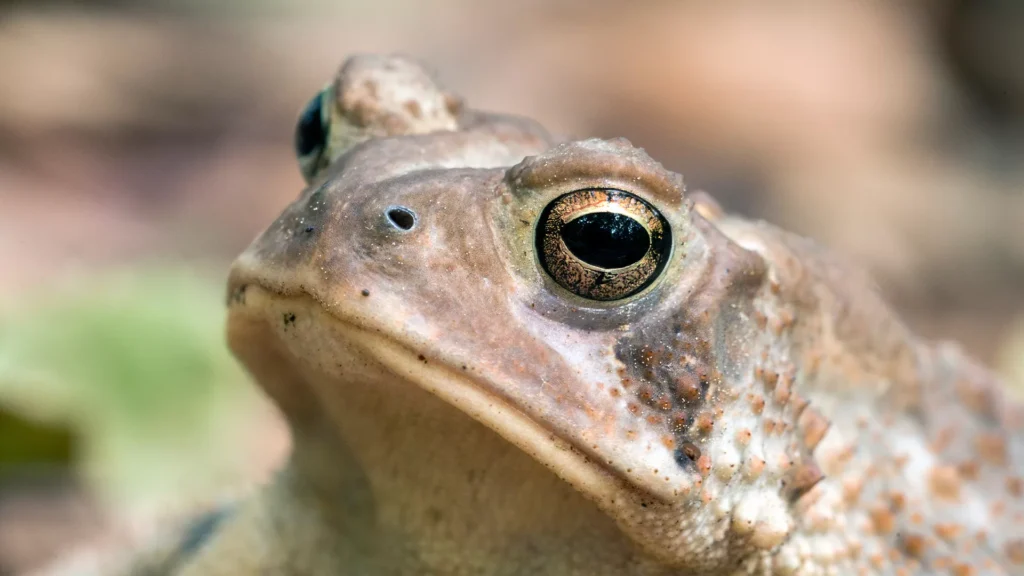
Fowler’s toad: Distribution and Range
The Fowler’s toad is widely distributed across North America, ranging from southern New England through the mid-Atlantic states and extending westward to Texas, Missouri, and Illinois. They are also found in southern Ontario, Canada, near the Great Lakes. However, they are absent from parts of South Carolina, Georgia, and Florida due to competition and unsuitable habitats. These toads prefer sandy soils and open woodlands close to water bodies for breeding. No subspecies have been identified, indicating genetic uniformity across their range. While adaptable, they face threats such as habitat loss and pollution in some areas.
Fowler’s toad: Habitat
The Fowler’s toad is highly adaptable, inhabiting prairies, woodlands, meadows, and sandy beaches. It thrives near freshwater sources like ponds, marshes, and lake edges for breeding and moisture. Preferring sandy or loose soils, they burrow for protection from predators and extreme weather. In woodlands, they shelter under leaf litter or rocks, favoring cool, shaded areas. These toads also adapt to human-altered environments, such as gardens and agricultural fields, where insects are abundant. Despite their adaptability, urbanization and pollution threaten some populations.
Fowler’s toad: Behavior
The Fowler’s toad is primarily nocturnal but is more active during the day compared to other toad species. They adapt well to human presence, often found in gardens and suburban areas without showing fear. When threatened, they may release a foul-smelling urine as a defense mechanism. These amphibians can also play dead to avoid predators. They are skilled diggers, burrowing into loose soil to escape extreme temperatures. Socially, they are mostly solitary but gather during the breeding season.
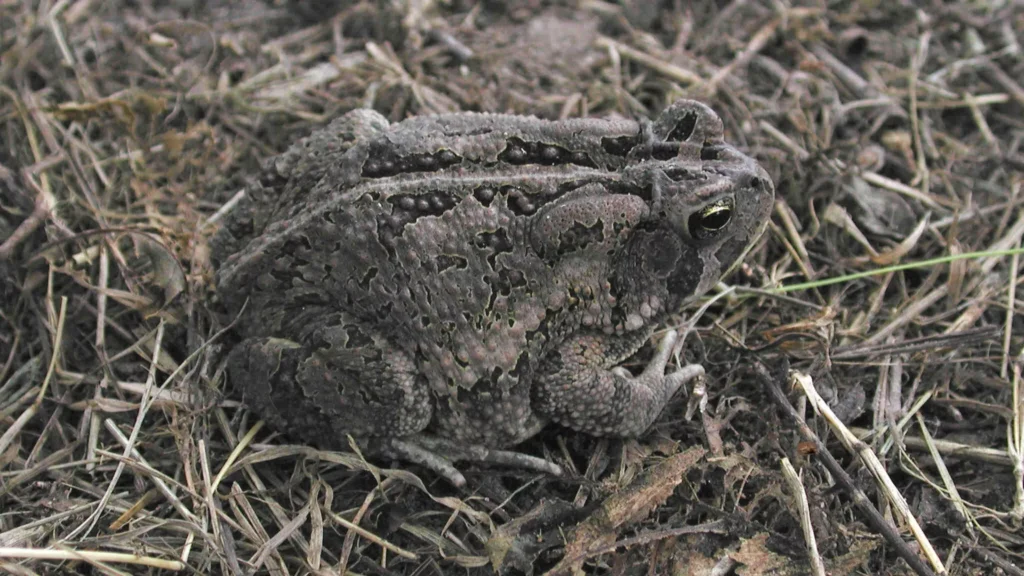
Fowler’s toad:Diet
The Fowler’s toad is primarily insectivorous, with its diet consisting mainly of insects and small invertebrates. These toads use their long, sticky tongues to capture prey, such as ants, beetles, and grasshoppers, which they hunt during the night when they are most active. Unlike the American toad, Fowler’s toads tend to avoid earthworms, possibly due to differences in feeding behavior and habitat preferences. Their tadpoles have a different diet, primarily feeding on bacterial mats and algae that grow on underwater surfaces, such as rocks, plants, and debris. This diet provides essential nutrients for their growth during the aquatic larval stage.
Life Cycle of the Baby Fowler’s Toad
Fowler’s toad females can lay anywhere from 7,000 to 10,000 eggs, which hatch in 2 to 7 days. These eggs give rise to tiny tadpoles that undergo metamorphosis within 4 to 6 weeks, transforming into juvenile toads. The tadpoles begin life at 1 to 1.4 cm (0.39 to 0.55 inches) in length, with a long tail and fin structures that gradually disappear as they mature.
Some of the young toads reach sexual maturity in a single growing season, while others may take up to three years.


Fowler’s toad:Mating and Reproduction
The Fowler’s toad breeds during the warmer months, usually between April and July, with peak activity occurring in May and June.They favor shallow, open waters for mating, including woodland ponds, farm ponds, and marshes.
Males migrate to these breeding sites, calling out to attract females. Interestingly, their calls can also attract other males, leading to accidental mating attempts between males. These situations are often resolved when one of the males emits a chirping ‘release call.’
Once a female is selected, the male climbs onto her back and copulation occurs.
Call
The Fowler’s toad, although not as vocal as the American toad, produces a nasal, loud “waaaah” sound that can last up to four seconds. Males also make a chirping call, known as a ‘release call,’ when another male mistakenly attempts to mate with them.
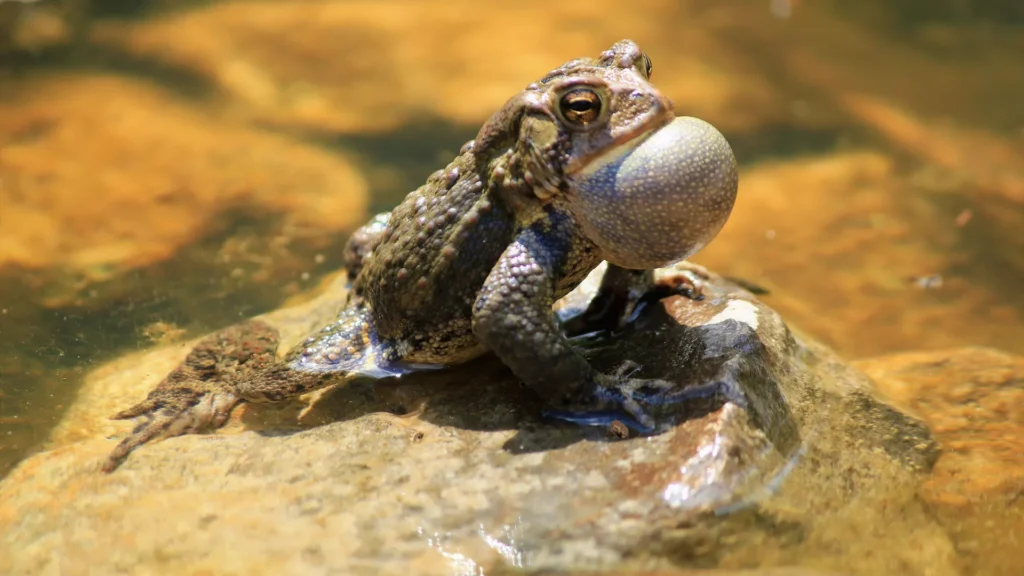
Lifespan
The average lifespan of a Fowler’s toad is around 5 years, though some individuals may live longer under favorable conditions. While their lifespan is relatively short compared to some other amphibians, these toads are an important part of their ecosystems. Their role as insectivores helps control insect populations, while their presence in both terrestrial and aquatic environments contributes to the biodiversity and ecological balance of the habitats they occupy. Additionally, the relatively short lifespan of Fowler’s toads is compensated by their high reproductive rate, which allows them to maintain healthy populations despite natural threats.

Adaptations
Fowler’s toads have several remarkable adaptations:
- Camouflage: Their skin coloration helps them blend seamlessly into their surroundings, offering protection from predators.
- Playing Dead: As a defense mechanism, these toads may pretend to be dead when threatened.
- Toxic Secretions: The warts on their skin secrete a sticky, distasteful substance that deters most predators.
Predators
Predators of Fowler’s toad, such as snakes, small mammals, and birds, pose significant threats to its survival. Snakes, like garter snakes, often ambush the toads when they venture out from their burrows. Small mammals, including raccoons and opossums, are opportunistic feeders that may hunt the toads, particularly during the night when these creatures are most active. Additionally, birds such as herons and crows are known to prey on young toads or even adults when they are exposed in open areas. These predators contribute to the high mortality rate of Fowler’s toads, especially during their early life stages. Consequently, the toads rely on various defense mechanisms, like their ability to secrete toxins from their skin, to deter some of these threats.
Fowler’s toad: Conservation Status
The Fowler’s toad is generally abundant throughout much of its range, and the International Union for Conservation of Nature (IUCN) Red List classifies it as “Least Concern” (LC), indicating that it does not currently face significant widespread threats. Despite this, local populations in specific regions, such as Ontario, Canada, are considered at risk due to habitat loss, pollution, and climate change. These toads are particularly vulnerable in areas where wetland habitats are being drained or altered for development, which disrupts their breeding and feeding areas. Conservation efforts in these regions focus on preserving and restoring suitable habitats to ensure the species remains viable in the long term.
Conclusion
Fowler’s Toad is a fascinating amphibian with unique behaviors, adaptations, and ecological importance. From their insectivorous diet to their ability to secrete toxins for defense, they have evolved to thrive in a variety of habitats. Despite facing threats from predators and environmental changes, Fowler’s toads continue to play a critical role in maintaining the balance of ecosystems, particularly by controlling insect populations. Whether found in urban or rural areas, they are a valuable part of North American biodiversity. Their resilience and adaptability highlight the importance of conserving their habitats to ensure their continued presence in the wild.
Interesting Facts
- In Ontario, Canada, Fowler’s toads are considered a species at risk due to habitat loss and environmental pressures.
- This species was once considered a subspecies of the Woodhouse’s toad.
- The genus name Anaxyrus is derived from the Greek word for “king” or “chief.”
- A distinguishing feature of the adult Fowler’s toad is a pale stripe running along its back.
- Though their toxin is less potent than that of other poisonous frog species, it can still cause drooling and vomiting in pets like dogs and cats if ingested.
faq’s
1. What is a Fowler’s Toad?
Fowler’s Toad is a species of true toad found in the eastern United States and parts of Canada. It is named after naturalist Samuel Page Fowler.
2. How big do Fowler’s Toads get?
They are relatively small, measuring 2 to 3.5 inches (5 to 9 cm) in length.
3. What do Fowler’s Toads look like?
Fowler’s Toads have:
A gray, brown, or olive-green body with dark spots
A light stripe down the middle of their back
Warty skin with small, reddish or brownish warts
A white or cream-colored belly
4. Where do Fowler’s Toads live?
They are found in a variety of habitats, including:
Sandy areas near water (e.g., beaches, riverbanks)
Forests
Grasslands
Urban and suburban areas
5. What do Fowler’s Toads eat?
They are carnivorous and feed on:
Insects (e.g., beetles, ants, flies)
Spiders
Small invertebrates
6. Are Fowler’s Toads poisonous?
Yes, like most toads, they secrete a mild toxin from their skin to deter predators. This toxin is not harmful to humans but can irritate the eyes or mouth.
7. What is the lifespan of a Fowler’s Toad?
In the wild, they typically live for 3 to 5 years, though some may live longer in ideal conditions.
8. How do Fowler’s Toads reproduce?
Breeding occurs in spring and early summer. Males gather near water bodies and call to attract females. Females lay 2,000 to 10,000 eggs in long strings, which hatch into tadpoles within a week.
9. What is the call of a Fowler’s Toad like?
Their call is a short, nasal “waaaah” sound, often compared to the bleat of a sheep. It is used to attract mates and establish territory.
10. Do Fowler’s Toads have any predators?
Yes, their predators include:
Snakes
Birds
Small mammals
Larger amphibians
11. Are Fowler’s Toads endangered?
No, they are currently listed as Least Concern by the IUCN. However, habitat loss and pollution can threaten local populations.
12. How do Fowler’s Toads survive in dry environments?
They are highly adaptable and can burrow into the ground to stay moist during dry periods.
13. Can Fowler’s Toads be kept as pets?
While they can be kept as pets, they require specific care, including:
A humid environment
A diet of live insects
Proper handling to avoid stress
14. What is the difference between Fowler’s Toad and American Toad?
Fowler’s Toad has:
Smaller warts
A light stripe down the back
A white belly with one dark spot (unlike the American Toad’s spotted belly)
15. Why are Fowler’s Toads important to the ecosystem?
They help control insect populations and serve as prey for larger animals, playing a vital role in their ecosystems.
References
http://herpsofnc.org/fowlers-toad/
https://animaldiversity.org/accounts/Anaxyrus_fowleri/
https://www.virginiaherpetologicalsociety.com/amphibians/frogsandtoads/fowlers-toad/index.php
https://amphibiaweb.org/species/173
https://wakeaudubon.org/creature-feature-fowlers-toad-bufo-anaxyrus-fowleri/
